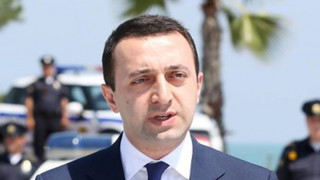On 26 July, the Parliament of Georgia discussed the issue of declaring trust towards the renewed composition of the Government. Member of the Parliamentary Minority, Sergo Ratiani, whilst asking a question to the Prime Minister, paid attention to the issue of students with suspended status and noted that their number is increasing. According to him: “As of today, the number of students with suspended status is more than 33,000, including 11,000 suspended for non-payment. This amount was 11,000 as of 1 October 2012. [This year] it increased three times. In October 2013, [the number of students with suspended status] was 28,000 and 8,000 of them were suspended due to non-payment.” According to the Prime Minister, however, the situation is different. He stated: “The number of students with suspended status, who weren’t able to pay, is decreasing, on the contrary.”
FactCheck took interest in the statements of the Deputy and the Prime Minister and verified their accuracy.
To find out upon which data Sergo Ratiani was relying whilst making his statement, FactCheck contacted the Deputy himself. Mr Ratiani stated that these data were retrieved from an official institution, the National Centre for Educational Quality Enhancement. Based upon the Centre’s data, as of January 2014: “The number of students enrolled in authorised higher educational institutions (Bachelor’s, Master’s, Single-stage Medical, Doctorate, Preparation in Georgian Language, Professional Higher and 4-5 Step Professional Education Institutions) with suspended status amounted to 33,575. Among them, 11,685 were suspended due to non-payment.” Also according to the Centre’s data, as of 1 October 2013 the number of students with suspended status was 28,055. From these, 8,304 were suspended due to non-payment.
As can be seen, the numbers as mentioned by the Deputy correctly depict the quantitative data about students with suspended status. If the number of students with suspended status was 28,055 as of 1 October 2013, it increased by 5,520 students as of 21 January 2014. The number of students whose status was suspended because of non-payment has also increased. Therefore, the Prime Minister’s statement that the number of students with suspended status who were unable to pay for their studies is, on the contrary, decreasing is incorrect.
Sergo Ratiani also stated that as of 1 October 2012, the number of students with suspended status was 11,000. The Deputy explained to us that the former administration of the Ministry of Education approved this information although Mr Ratiani himself did not receive a letter from the National Centre for Educational Quality Enhancement in attesting to the accuracy of the abovementioned. According to Mr Ratiani, the Centre referred to the errors in out-of-date databases as the reason for its non-reply.
To specify the number of students with suspended status, FactCheck contacted the National Centre for Educational Quality Enhancement as well. Our first letter was sent on 31 July of this year and we received an answer on 27 August. The National Centre for Educational Quality Enhancement requested a specification of technical details in its letter. FactCheck sent a second letter with the requested specification on 29 August and we received an answer on 29 September in which the Centre once again asked for additional specification of our questions. More precisely, the following paragraph was unclear for the Centre:
“Please provide us with information about both Bachelor’s and Master’s, Single-stage Medical, Doctorate, Preparation in Georgian Language, Professional Higher and 4-5 Step Professional Education Institution students.” The Centre requested a specification of the meaning of 4-5 Step Professional Education Institutions. (Note: In the letter sent to the Deputy, the Centre itself defined that students with suspended status include Bachelor’s, Master’s, Single-stage Medical, Doctorate, Preparation in Georgian Language, Professional Higher and 4-5 Step Professional Education Institution students).
We still have not received exact data from the National Centre for Educational Quality Enhancement (including data from 2012) about students with suspended status. In order to further specify the information requested, FactCheck sent one more letter to the Centre. Should an answer be received, relevant updates will be made to this article.
Conclusion
As of 1 October 2013, the number of students with suspended status was 28,055 with 8,304 suspended due to non-payment. As of 1 January 2014, the number of students with suspended status equalled 33,575 with 11,685 students suspended due to non-payment. FactCheck does not have written information about students with suspended status as of 1 October 2012. According to Sergo Ratiani, their number was 11,000.
FactCheck concludes that Sergo Ratiani’s statement, “As of today, the number of students with suspended status is more than 33,000, including 11,000 suspended for non-payment. This amount was 11,000 as of 1 October 2012. [This year] it increased three times. In October 2013, [the number of students with suspended status] was 28,000 and 8,000 of them were suspended due to non-payment,” is TRUE.
FactCheck also verified the Prime Minister’s statement. Comparing the data of 1 January 2014 and 1 October 2013, it is clear that the number of students with suspended status increased by 5,520 as compared to the previous year. In addition, the number of students whose status has been suspended due to non-payment has increased by 3,376.
Thus, FactCheck concludes that Irakli Gharibashvili’s statement, “The number of students with suspended status, who weren’t able to pay, is decreasing, on the contrary,” is aLIE.








